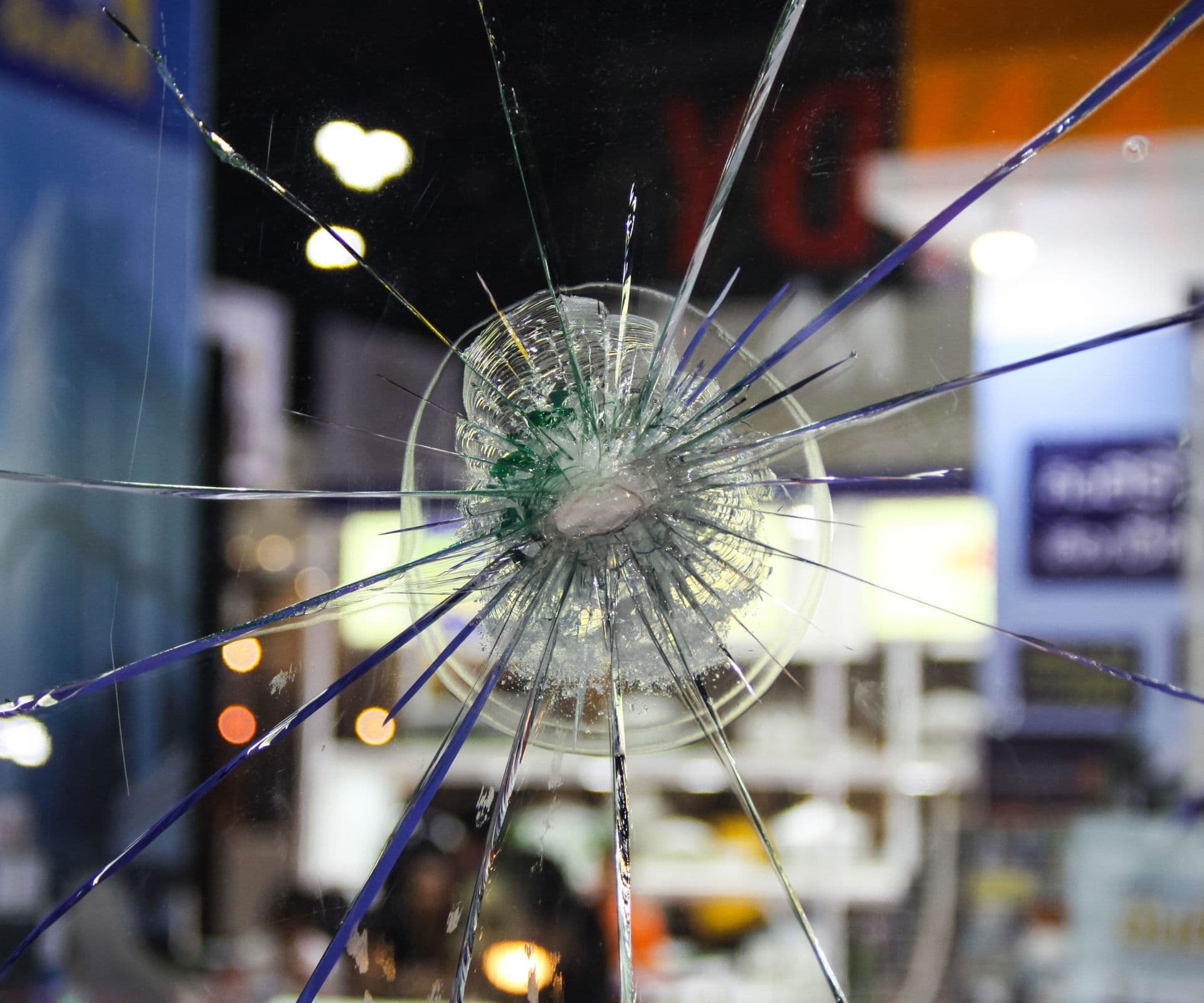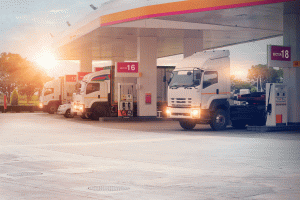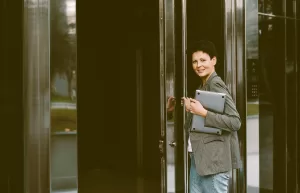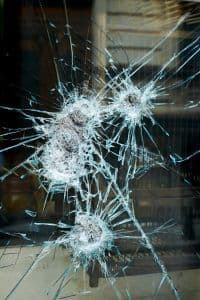The Evolution of Physical Security Measures in the UK
09 August, 2023
Over the years, the United Kingdom has witnessed a significant evolution in physical security practices, driven by changing threats (including the risk of terrorist attacks and an increase in violent crime), technological advancements, and an increased emphasis on safety.
Roughly 69.2 crimes are being committed against UK businesses every single hour, which is why physical security is a priority for every company. Let’s take a look at how security has evolved.
Locks and Bars
Historically, locks and bars formed the foundation of physical security measures in the UK. Simple locks were used to secure doors and gates as early as the Middle Ages, providing a basic level of protection against unauthorised entry. Iron bars were often installed on windows to reinforce their strength and prevent break-ins.
During the Industrial Revolution, advancements in lock technology led to the development of more secure and intricate locking systems. Lever locks, mortice locks, and padlocks became common, offering increased resistance against forced entry.
Traditional locks were often vulnerable to picking, bumping, or other lock manipulation techniques. To counter these threats, security doors now feature advanced locking mechanisms, including multi-point locks, deadbolts, and high-security cylinders. These systems provide additional layers of protection and make it more challenging for unauthorised individuals to bypass the locks.
Today, modern locks can interface with digitised access control systems, electric strikes, maglocks, electro-mechanical locks and motorised locks to provide even more comprehensive security.
Safes
The concept of safes dates back to ancient times, with the earliest recorded use dating back to the tomb of Pharaoh Ramesses II in the 13th century BC. Safes have evolved over time, from wooden constructions with movable pins to oak structures with iron bands and later to safes made of iron with various inner wall materials such as stone, plaster, wood, cement, brick, and asbestos.
In the 18th century, the first modern-style fireproof safe was designed by British engineer William Marr, using double walls of steel with heat insulation. In 1834, Charles and Jeremiah Chubb obtained a patent for a burglar-resisting safe, marking an important milestone in safe production. The 18th century also saw the invention of various lock mechanisms, including tumbler, combination, code, and time locks, which contributed to the advancement of safes.
Today, safes offer not only physical security but also convenience in managing cash deposits. Businesses can deposit cash directly into their safes, and the deposits are automatically credited to their accounts on a daily basis. When the safe reaches capacity, a Cash-in-Transit (CIT) company can collect the cash without the need for manual handling. This modern approach to cash management streamlines the process and reduces the risk associated with cash handling.
The Rise of Bullet and Attack Resistant Screens
With the emergence of firearms and increased threat levels, traditional locks and bars proved inadequate in ensuring complete protection. The need for more robust security measures led to the development of bullet-resistant screens and glazing. Initially designed for high-security establishments such as banks and government buildings, bullet-resistant screens provided a physical barrier against armed attacks, mitigating the risk of injury or loss of life.
Bullet and manual attack-resistant screens are typically made of reinforced glass or transparent materials, i.e. acrylic or polycarbonate, that are capable of withstanding the impact of bullets and other weapons. These screens have evolved over time, incorporating innovative materials and technologies to enhance their strength and effectiveness. They are now widely used in various sectors, including retail, transportation, and critical infrastructure, providing a crucial layer of protection against armed threats.
Security Doors
Early security doors were typically made of wood or basic metal frames. However, with the growing need for enhanced security, doors began incorporating stronger materials such as steel, iron, and reinforced alloys. These materials offer increased resistance to forced entry and physical attacks, making them more durable and secure.
As security threats evolved to include forced entry attempts using brute force, security doors began incorporating impact-resistant materials. These materials, such as high-strength steel or reinforced composites, can withstand significant force and resist attempts to kick, tamper with, or ram the door down.
Bullet-resistant doors are constructed using specialised materials, such as ballistic steel, laminated glass, and reinforced composites. These doors provide protection against firearms and are commonly used in banks, government buildings, and critical infrastructure facilities.
With the rise of digital security systems, security doors now often integrate with access control systems. This allows for the implementation of keyless entry methods, such as smart cards, biometric scanners, or keypad access. Integration with access control systems provides enhanced security and the ability to track and monitor entry and exit activities.
While the primary focus of security doors is safety and protection, there has been an increasing emphasis on design and aesthetics. Manufacturers now offer a wide range of styles, finishes, and customisation options to ensure that security doors seamlessly blend with the overall architecture and design of the premises.
Hostile Vehicle Mitigation
In recent decades, the UK, like many other countries, has witnessed an increase in attacks with vehicles targeting crowded public spaces. In response to this emerging threat, physical security measures have evolved to include anti-ram posts. These posts are designed to prevent unauthorised vehicles from accessing restricted areas, protecting pedestrians and critical infrastructure.
Anti-ram posts can be fixed or retractable and are typically made of sturdy materials such as steel or concrete. They are strategically placed at entrances, public spaces, and sensitive locations to create a physical barrier against vehicle-based attacks. The deployment of anti-ram posts has become an integral part of security planning, particularly in areas with high footfall and potential vulnerability.
The Advent of Digital Security Systems
As technology rapidly advanced, the UK witnessed a paradigm shift in physical security measures with the emergence of digital security systems. Traditional physical barriers, while effective to some extent, were now complemented by sophisticated electronic surveillance, access control, and alarm systems. These digital security solutions revolutionised the way security is managed, monitored, and responded to.
Digital security systems encompass a wide range of technologies, including closed-circuit television (CCTV), biometric access control, intrusion detection systems, and remote monitoring. CCTV cameras, in particular, have become ubiquitous in public spaces, commercial premises, and residential areas, providing real-time monitoring and evidence-gathering capabilities.
The Safetell Difference
Safetell has been keeping businesses in the public and private sectors safe for more than 30 years. Both safety technology and crime have changed over the years, and so have we. We’ve not only kept up to date with the latest innovations; we’re proud physical safety pioneers.
If you would like to know more about improving physical safety for your business, get in touch with one of our experts today.












